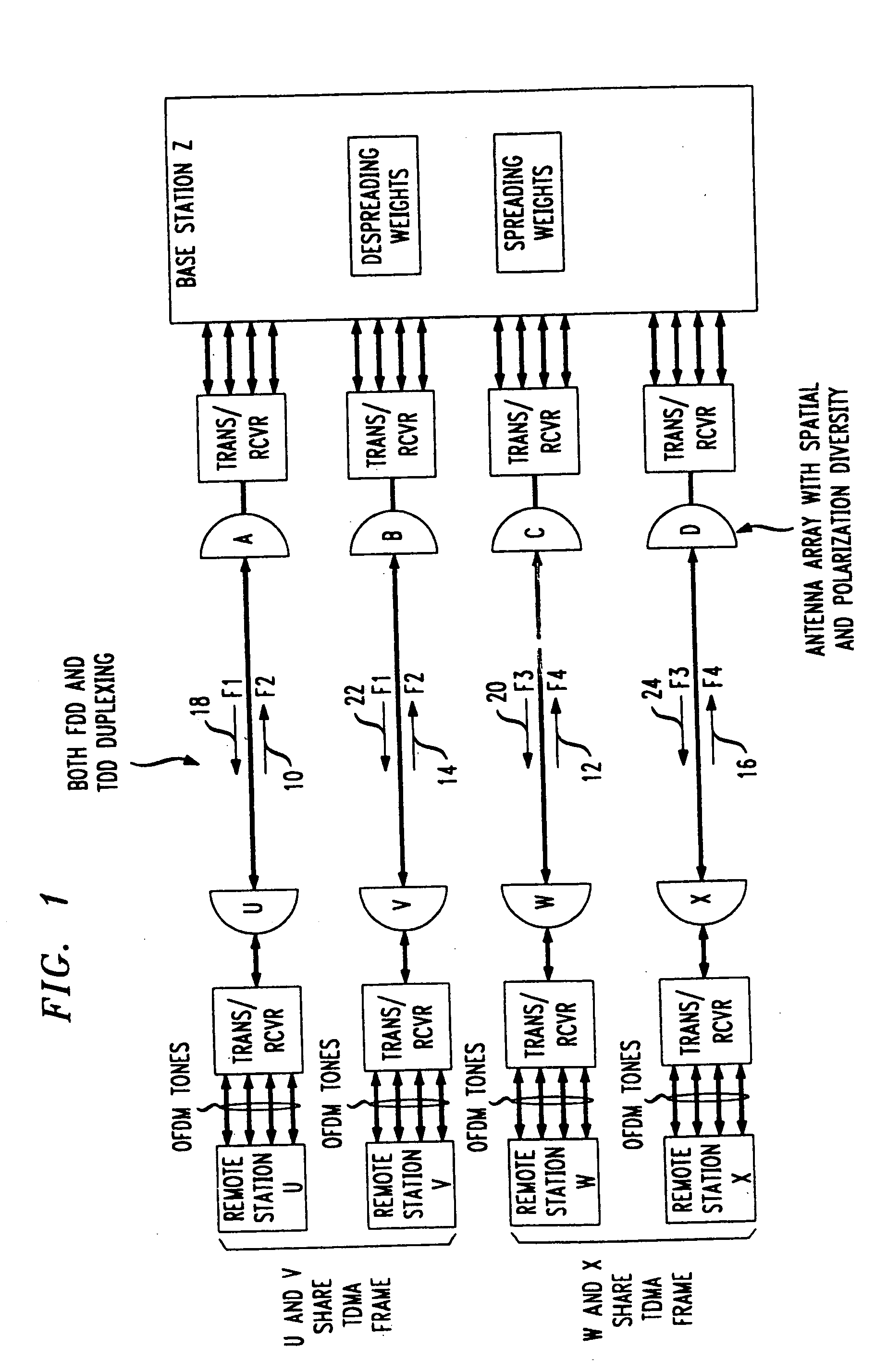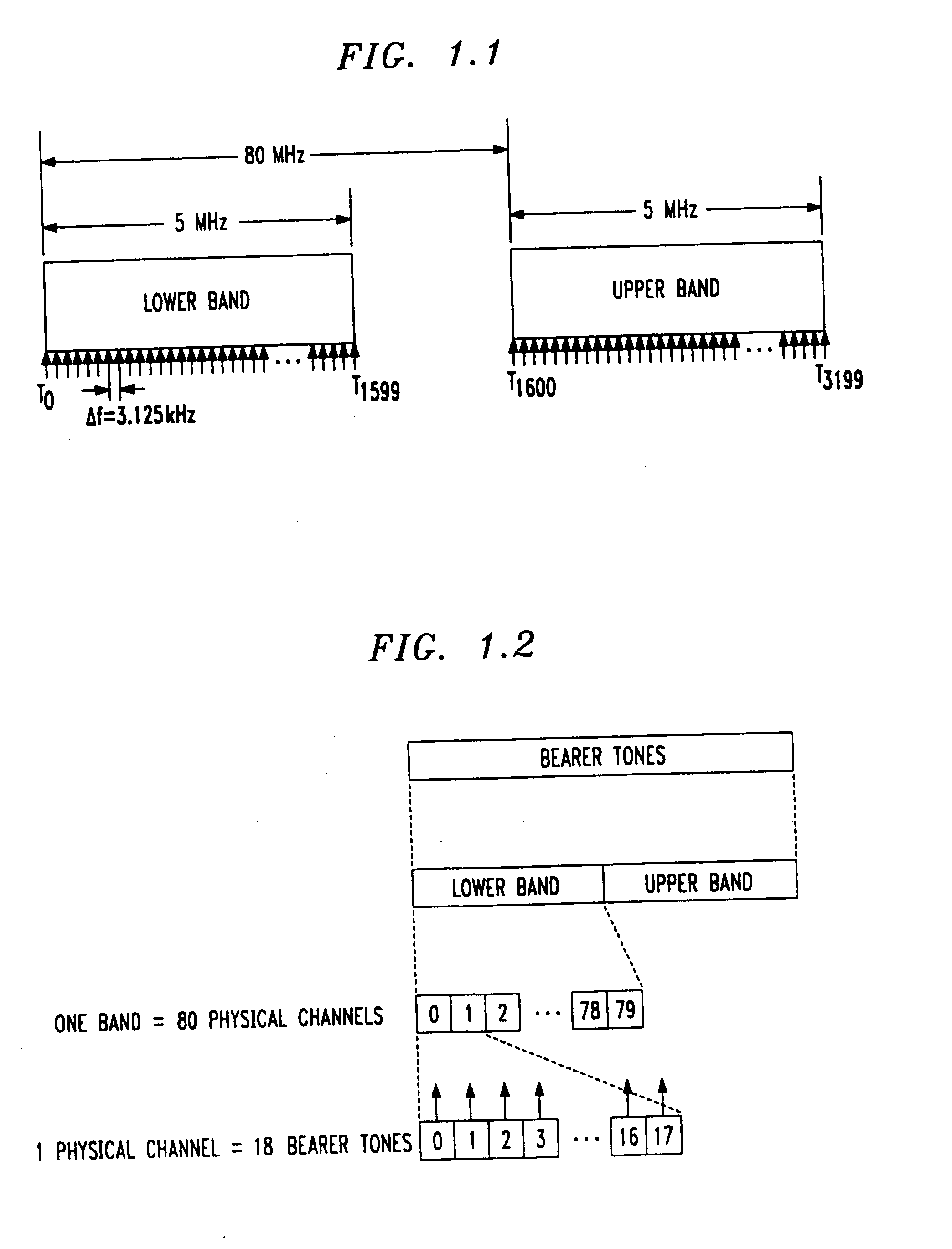Method for frequency division duplex communications
a frequency division and duplex communication technology, applied in the field of communication systems and methods, can solve the problems of less success in implementing such combinations, difficult to calculate the optimal operating parameters, and switch off of subcarriers, etc., to achieve high quality pcs communications, excellent fade resistance, and high bandwidth efficiency
- Summary
- Abstract
- Description
- Claims
- Application Information
AI Technical Summary
Benefits of technology
Problems solved by technology
Method used
Image
Examples
example
[0221]
a1=a2=1, a3=1 / 2
[0222] An RU requests a traffic channel from its serving cell. It reports the following measurements as part of traffic establishment: RSSI(1)=−95 dbm, SINRRU(1)=9.3 dB RSSI(2)=−95 dBm, SINRRU(2)=4.5 dB.
[0223] The serving base measures the incoming RU's DOA as 42 degrees. There is an RU on channel 1 at 127 degrees, and one on channel 2 at 133 degree. Also, SINRBase(1)=12 dB, and SINRBase(2)=13 dB. CAF(1)=(180-127-42)+(133-95)-0.5(9.3+12)=122.35CAF(2)=(180-133-42)+(133-95)-0.5(4.5+13)=118.25
[0224] The RU measured the same RSSI on both channels. The DOA of the existing RU on channel 1 was slightly better than the DOA of the existing RU on channel 2. The base's SINR measurement for channel 1 was slightly better than the measurement for channel 2. The measurement that made the biggest difference in this case was the RU SINR.
[0225] In order to effectively measure SINR, the RUs and base must have a sense of whether or not a signal belongs to a given cell. W...
PUM
 Login to View More
Login to View More Abstract
Description
Claims
Application Information
 Login to View More
Login to View More - Generate Ideas
- Intellectual Property
- Life Sciences
- Materials
- Tech Scout
- Unparalleled Data Quality
- Higher Quality Content
- 60% Fewer Hallucinations
Browse by: Latest US Patents, China's latest patents, Technical Efficacy Thesaurus, Application Domain, Technology Topic, Popular Technical Reports.
© 2025 PatSnap. All rights reserved.Legal|Privacy policy|Modern Slavery Act Transparency Statement|Sitemap|About US| Contact US: help@patsnap.com



